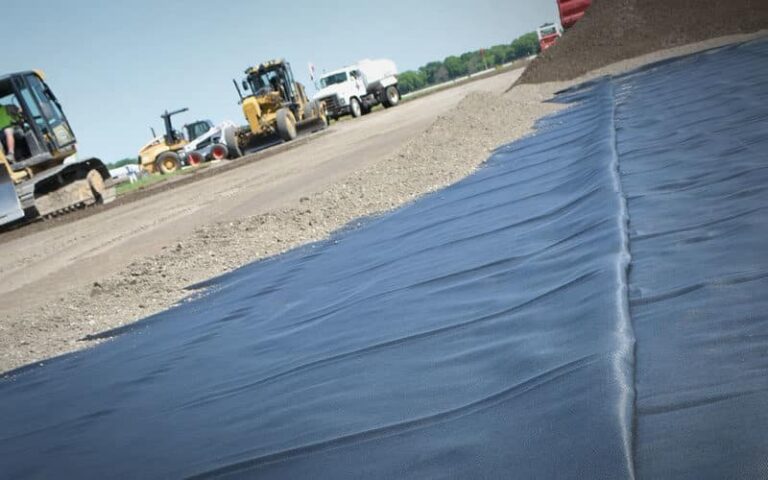
Whether you’re preparing a roadbed, parking lot, retaining wall, or slope, a successful construction project depends on the strength of its base. Poor subgrade conditions can lead to settlement, cracking, and premature failure. That’s where geogrids and stabilization fabrics come in. These engineered materials improve soil structure, reduce the need for costly over-excavation, and enhance the long-term durability of your jobsite.
At Stevenson Supply & Tractor Co., we offer industry-trusted geosynthetic solutions from Winfab and Mirafi. In this guide, we’ll explore the types of stabilization products available, how they work, and when to use them, plus installation tips to ensure optimal performance on the jobsite.
Geogrids are high-strength synthetic mesh materials made from polymers like polypropylene or polyester. Their open-grid design allows for soil interlock, which distributes loads and increases soil bearing capacity. They are most commonly used in road base construction, retaining walls, and subgrade stabilization.
Stabilization fabrics, often referred to as woven or nonwoven geotextiles, are permeable materials that provide separation, filtration, and reinforcement. Nonwoven fabrics are ideal for drainage and erosion control, while woven fabrics excel in heavy-duty stabilization applications.
Together, these products prevent rutting, washouts, and subgrade contamination, making them essential for contractors who want to build right the first time.
At Stevenson Supply & Tractor Co., we stock two leading brands: Winfab and Mirafi. Both offer high-performance products, but they excel in slightly different applications.
Winfab products are known for their durability and value. Winfab 800N, for example, is a nonwoven needle-punched geotextile commonly used under riprap, behind retaining walls, and for general drainage. Winfab’s woven options, like 200W or 400W, provide excellent strength and cost-efficiency for stabilization under roads and jobsite pads.
Mirafi is another top option for engineered reinforcement applications. Products like Mirafi HP270 are designed for high-performance roadways and heavy construction projects. Mirafi 500X, on the other hand, is a popular woven fabric for separating aggregate from soft soil in parking lots and residential developments.
Use Winfab for general construction, cost-conscious jobs, and water-permeable zones. Turn to Mirafi when your specs call for it by name. Our knowledgeable staff can help guide you to the right fit based on your project’s specific conditions.
Proper installation of geogrids and fabrics is essential to their success. Begin by preparing the subgrade, remove all organic matter, debris, and standing water. Grade the surface as flat as possible and compact it lightly.
For stabilization fabric, roll out the material in the direction of construction. Overlap adjoining sections by 12–18 inches or follow the manufacturer’s spec. Secure the edges with landscape staples or trench them to prevent shifting.
For geogrid applications, orient the grid so that its strongest axis runs perpendicular to the direction of loading. Overlap each grid by 1–2 feet. Tension the grid slightly and stake it in place before covering with aggregate. Always ensure the aggregate depth meets spec, typically 6 to 12 inches, and compact in lifts to maintain full contact.
Avoid wrinkles and folds that can reduce load transfer. Take care not to drive equipment directly on exposed geosynthetics; instead, build a working platform of base rock before moving heavy machinery.
The right geogrid or stabilization fabric can make the difference between a job done and a job done right. Stevenson Supply & Tractor Co. is your Northern California partner for high-quality geosynthetic materials. Whether you need basic site separation or engineered reinforcement, we stock the products and have the know-how to help you make smart choices.
Come visit our showroom, give us a call at (707) 575-3335, or contact us online to request a quote, we’ll make sure your next job starts on solid ground.